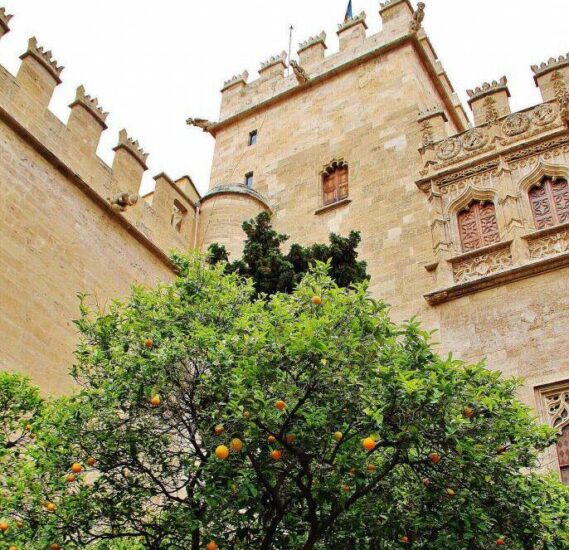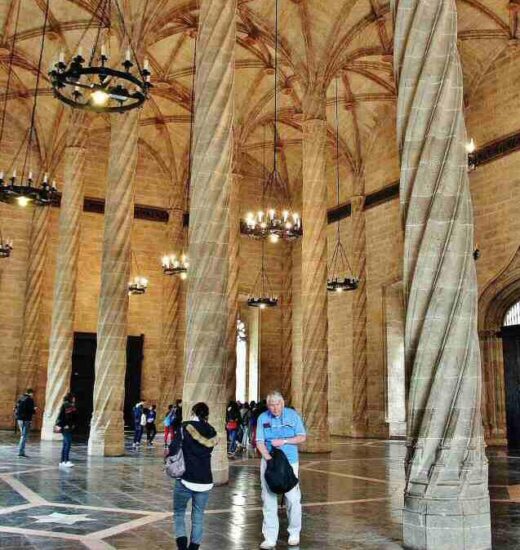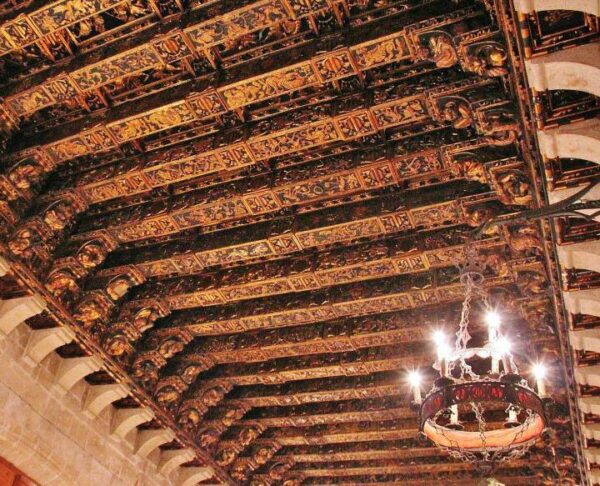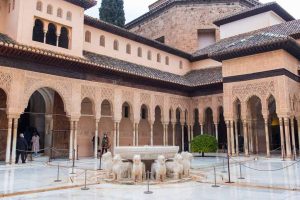La Lonja de la Seda It is not one more monument than you can visit in the historic center of Valencia.
This is a surprising gothic building that puts the Levantine city on the list of places Heritage.
It is not easy to see large civil buildings of Gothic architecture, which in our imagination we have more linked to the great cathedrals of central and southern Europe.
All the information in detail
Why is the Silk Exchange a World Heritage Site?
For this reason, in 1996 the Lonja de la Seda was declared a monument Heritage awarded by the Unesco
This international organization justifies the declaration because it is an exceptional example of the civilian gothic, and represent the strength of trade in Mediterranean cities during the time of their construction.
Curiosities about the history of the Silk Exchange
La Valencia Silk Exchange, also known as the Market of the Merchants, was built from the year 1492, its architect being the Valencian Pere Compte.

You should know that the building was built in just 15 years, and that it was called Lonja de la Seda due to the great boom that it had in the Middle Ages in Valencia, when the city was an important silk producing center.
In the 18th century there was an epidemic and silk disappeared from Valencia.
At that time the mulberry trees that had been used to produce silk were replaced by citrus trees made from sweet oranges from China.
The discovery of the healthy characteristics of oranges thanks to Vitamin A It led to the subsequent great boom in its plantations and their export.
What to see when visiting the Silk Exchange in Valencia
You can find the monument in full historic center of Valencia, in front of the building Central Market and the striking façade of the Church of the Santos Juanes.

Gargoyles on the facade of the Silk Exchange in Valencia
Your visit should start by making a visual tour of the main façade, where you can see numerous gargoyles and figures that refer to the vices and virtues of man.
You shouldn't be surprised by some with very explicit scenes, since it was the form of communication at a time when the majority of the population was illiterate.
Surely for this reason it should not surprise you that when you enter the premises of the Lonja de la Seda To visit the monument, the first thing you find is a patio with orange trees.
And as for the commercial atmosphere of the building, you can still breathe it with the philately and numismatic market of the Lonja de la Seda that every Sunday morning settles in this place.
Columnar Hall of the Silk Exchange
On the left you have the main and best-known room of the Lonja de la Seda, its imposing Columnar Hall, which was the recruiting room.

This is where you will see the characteristic image of the monument, with the 24 helical columns 17 meters high that separate the three longitudinal naves and the five transversal ones.
Despite not being a large Gothic cathedral, the majesty of this completely open room is impressive, whose roof is supported by the columns that look like large palm trees.
Surely what will also catch your attention is the great height of the gothic windows.
Consulate of the Sea in the Silk Exchange of Valencia
In addition to a three-story towerNext to this building is the Consulate of the Sea, which was built five years later, but already in Renaissance style.

This drastic architectural change was due to the influence of the Borgia Valencians, who already knew that style that was booming in Italy at that time.
ORGANIZE your TRIP
- Don't forget your TRAVEL INSURANCE with a 5% discount
- Book the HOTEL for your trip
- RENT a CAR for your trip
- The best TOURS and EXCURSIONS in Spanish
- NO-LINE TICKETS for museums and monuments
- Best FREE TOURS around the world
- Book your TRANSFER from the airport
- eSIM card with INTERNET at the best price
During your visit you will go up to the upper floor of the Consulate of the Sea, where you find the Golden Chamber, a large rectangular room that was originally used for trials.
Here your sight will undoubtedly go towards the great wooden coffered ceiling.
You will be curious to know that, in reality, said coffered ceiling belonged to the old gothic building of the Valencia town hall, which disappeared after a fire at the beginning of the 20th century.

The coffered ceiling was preserved and it was decided to install it in the aforementioned Golden Chamber.
Visiting hours of the Silk Exchange in Valencia
The Visiting hours of the Valencia Silk Exchange They are, throughout the year, from Monday to Saturday from 10 a.m. to 19 p.m., and on Sundays and holidays, from 10 a.m. to 14 p.m.
If you prefer to visit the Levantine capital, here you can sign up for a guided tour of Valencia and the Silk Exchange, two hours long
Ticket prices Lonja de la Seda
The ticket prices They are, generally, 2 euros, and for students, pensioners and large families, 1 euro.
You can also visit the Silk Exchange for free Saturdays and Sundays.
Of course, currently the visit to this monument is free throughout the week while, as announced on its website, a new payment system is implemented.
Photos Valencia Silk Market
Here more photos of the Valencia Silk Exchange.






















Fantastic article, congratulations! The market is an example of the power of 15th century Valencia.
Magnificent report, just point out that Pere Comte was not from Valencia but from Gerona.
hahahaha, then those who want to annex are others
Incredible article and images. I congratulate you Jose Luis.